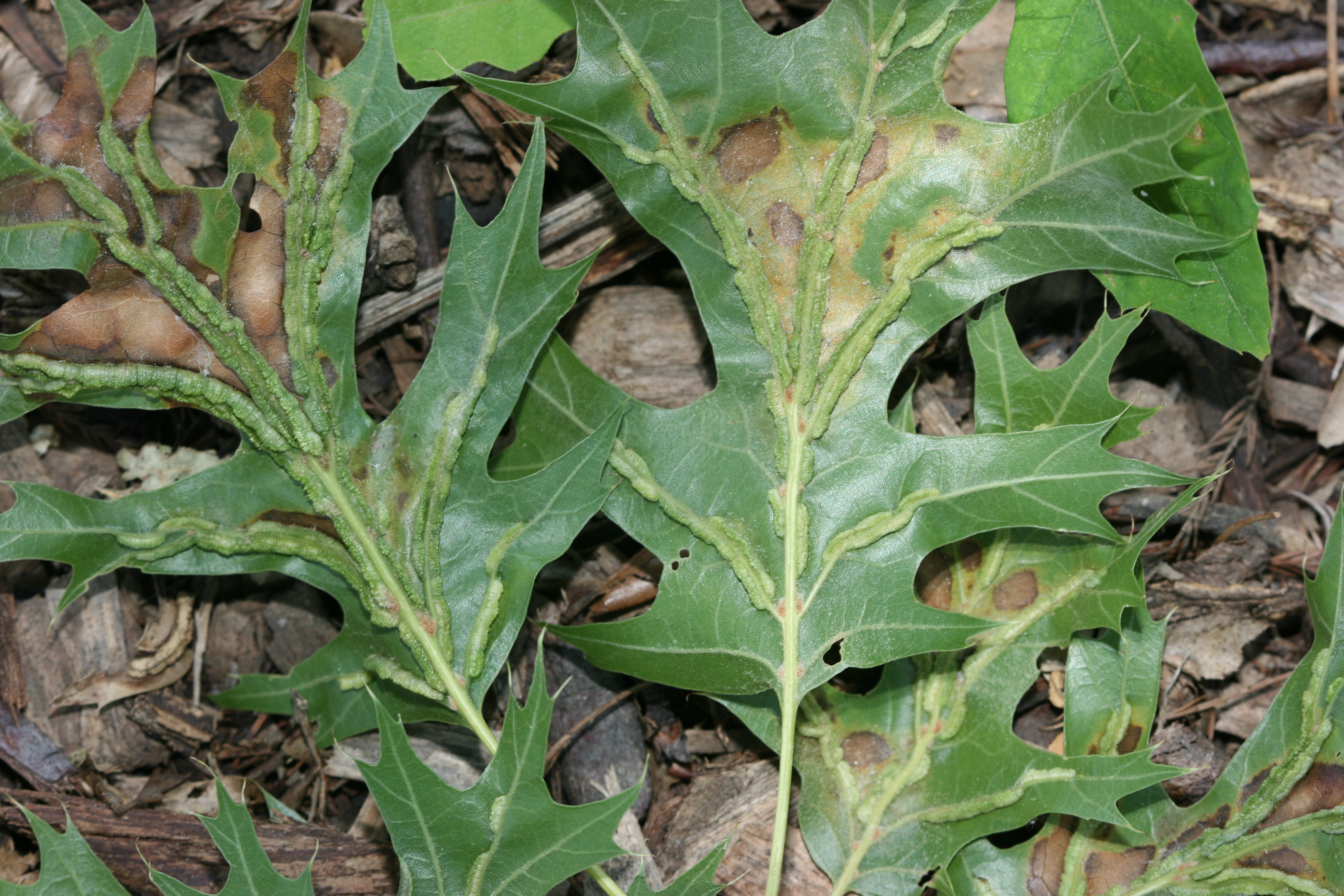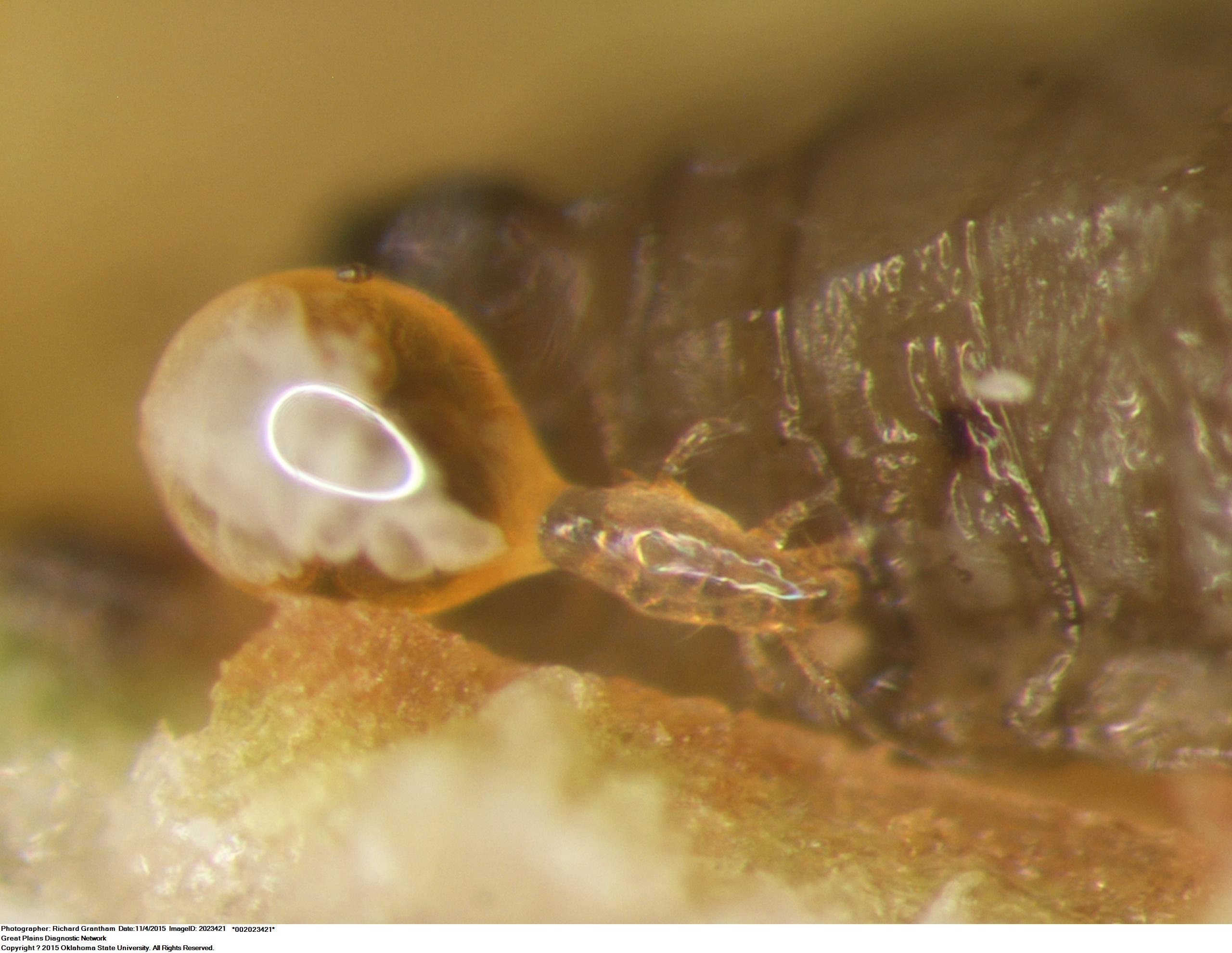In the latest issue of Pest Alerts from the Entomology Department at Oklahoma State University, entomologist Justin Talley reports finding evidence of a biting pest that has not been seen in Oklahoma or Texas for over ten years.

Vein pocket gall, Macrodiplosis quercusoruca, on red oak leaves, caused by a tiny fly that lives next to the veins on oak leaves. The fly larvae inside the galls are thought to be one of the insects fed on by oak leaf itch mites.
The oak leaf itch mite, Pyemotes herfsi, is cousin to the straw itch mite–a predatory mite often associated with stored grain and stored grain insects, and known to bite people who come in contact with infested grain. It was first reported in the U.S. from Kansas in 2004, a year when the mite was unusually abundant and resulted in thousands of biting complaints from people working and playing outdoors. That same year the mite was found in Nebraska, Missouri and here in Texas.
The mite’s normal home is inside of leaf galls, and it is best known from marginal leaf curl galls caused by a midge (Macrodiplosis erubescens) on oaks; but it may be equally at home in other types of galls on different trees. The problem with this mite seems to occur mostly in late summer and fall, when mites are prone to dropping from trees. Although the mites are principally predators on insects, if they come in contact with skin they will bite, leaving a painful, itchy welt. For more information on the mites click here for a Nebraska fact sheet.

Gravid female oak leaf itch mites. The balloon-like structure is the mite’s abdomen full of eggs. This mite is feeding on a brownish fly larva responsible for making the gall. Photo by Rick Grantham, OK State University.
This little mite has a history in Texas too. In October, 2004 the Dallas area had what was believed to be a mini-outbreak of these mites, when Dallas County Health and Human Services received a number of complaints from schools concerning “bug bites” among students and staff–apparently from playgrounds. At that time DCHHS staff and I sampled leaves from a number of school campus trees and isolated a single oak leaf itch mite, confirming at least the presence of these mites in north Texas. The rash of bite cases was assumed due to this mite by DCHHS in its December 2004 monthly report of epidemiology activity. No remarkable incidents of these bite complaints have recurred since 2004, although a few suspect calls have been received this year.
These mites are very small (0.2 mm-long) and difficult to find. Bites, when they occur, tend to be around necks and shoulders, implying that the mites bite when they land, and do not crawl much on the skin before biting, like ticks or chiggers.
I don’t mean to be an autumnal spoil sport, but if you’ve experienced these bites around your home, leaping into leaf piles might not be advisable this year. If you have suspicious bites after being outdoors under trees, consider avoiding the area until first frost. The repellent DEET may provide some protection. When raking and bagging leaves, wear long sleeved shirts and wear repellent.